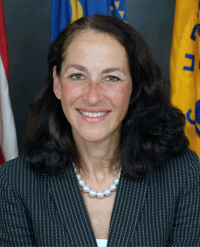By: Valerie Jensen
FDA has made progress over the last year or so in preventing and resolving shortages of important drugs — including chemotherapies, anesthetics and antibiotics. Nevertheless, the agency believes that even more can be done and is therefore turning to the American public for advice, as explained in a Federal Register notice published this week. What the public tells FDA will help inform the agency’s development of a strategic plan that will ultimately enhance FDA’s response to preventing and mitigating drug shortages.
 FDA has long been tackling the problem of drug shortages, and since October 2011, has stepped up its efforts to encourage drug and biological product manufacturers to report if they know of any circumstances that could lead to a drug shortage, including temporary interruptions in manufacturing. Such early notification is the agency’s most powerful tool to address drug shortages—we can’t work to prevent, mitigate, or resolve a shortage if we don’t know about it. Along these lines, FDA supported efforts to expand the FD&C Act’s early notification requirements as part of the Food and Drug Administration Safety and Innovation Act (FDASIA), enacted on July 9, 2012. Happily, these efforts have been paying off. For example:
FDA has long been tackling the problem of drug shortages, and since October 2011, has stepped up its efforts to encourage drug and biological product manufacturers to report if they know of any circumstances that could lead to a drug shortage, including temporary interruptions in manufacturing. Such early notification is the agency’s most powerful tool to address drug shortages—we can’t work to prevent, mitigate, or resolve a shortage if we don’t know about it. Along these lines, FDA supported efforts to expand the FD&C Act’s early notification requirements as part of the Food and Drug Administration Safety and Innovation Act (FDASIA), enacted on July 9, 2012. Happily, these efforts have been paying off. For example:
- The number of shortages is now less than half of what it used to be. There were 117 in 2012, down from 251 in 2011.
- Many more shortages are now being averted. We prevented 195 in 2011. Last year, we prevented 282.
We expect the requirements in FDASIA to further enhance FDA’s efforts to work with manufacturers and other stakeholders to prevent or alleviate shortages. When notified of a potential or actual shortage, FDA can take a number of actions, as appropriate, including: expediting inspections and reviews of regulatory submissions, working with the manufacturer to solve the underlying problem contributing to the shortage, identifying alternative manufacturing sources, exercising enforcement discretion for the shipment of a critically needed drug with special instructions to healthcare providers, and using enforcement discretion for the temporary importation of non-U.S. product.
One shortage of a drug that improves or saves the life of even one patient is one shortage too many. More can be done to prevent shortages.
As required by FDASIA, FDA has also formed an internal Drug Shortages Task Force to develop a strategic plan to enhance the agency’s efforts to address and prevent drug shortages. Among other things, the strategic plan will include blueprints for enhanced coordination, communication, and decision making within FDA and with other federal agencies; and plans for effective communication in the event of a shortage, including who should be alerted about potential or actual drug shortages and what information should be shared.
FDA wants to hear from all interested stakeholders on the strategic plan. The agency published a Federal Register notice, posted Feb. 11, which provides additional information and seeks input on six targeted questions related to the Strategic Plan and to preventing and mitigating drug and biological product shortages. Comments will be accepted through Thursday, March 14, 2013.
Valerie Jensen, a pharmacist and expert on drug shortages, is associate director at FDA’s Center for Drug Evaluation and Research










 Vaccination is the single best way to prevent influenza. Influenza is a contagious respiratory disease caused by a number of different influenza viruses, infecting the nose, throat and lungs. Even if you are healthy, you can pass the influenza virus to someone else one day before symptoms begin, and, you can continue to infect others up to five days after getting sick. Therefore, it’s possible for a healthy person to unknowingly spread the virus.
Vaccination is the single best way to prevent influenza. Influenza is a contagious respiratory disease caused by a number of different influenza viruses, infecting the nose, throat and lungs. Even if you are healthy, you can pass the influenza virus to someone else one day before symptoms begin, and, you can continue to infect others up to five days after getting sick. Therefore, it’s possible for a healthy person to unknowingly spread the virus.